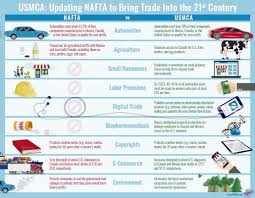A New Chapter in North American Trade
Since its implementation in July 2020, the United States-Mexico-Canada Agreement (USMCA) has become a focal point for trade discussions across North America. Designed to replace the North American Free Trade Agreement (NAFTA), the legislation aims to modernize trade rules and create a more equitable framework for businesses, workers, and consumers.
The Faces Behind USMCA Goods
At the heart of USMCA are the goods that cross borders—everything from agricultural products to automobiles. Yet, the discourse around trade agreements often overlooks the very people affected by these changes. For instance, farmers like Ana Torres from rural Ontario, who has seen a surge in demand for her organic produce due to new trade provisions, eloquently summarized the sentiment of many small producers. “USMCA has given us a platform to expand our market reach, making it possible for our family farm to thrive even amid uncertainty,” she remarked during a recent community meeting.
The Numbers Tell a Story
Recent statistics from the Office of the United States Trade Representative indicate that trade between the three nations has been significantly revitalized post-USMCA. In 2021 alone, trade in goods between Canada, Mexico, and the United States grew by 6.5%, showcasing the agreement’s initial success. However, it’s not just numbers that define success; it’s the stories behind those numbers that bring them to life.
The Social Media Pulse
Public sentiment around USMCA has been varied. A trending conversation on Twitter, with the hashtag #TradeWithHeart, showcases individuals advocating for more transparent trade practices that prioritize local economies. Comments range from enthusiasm to skepticism, as Canadians express their hope for USMCA goods to not only support larger corporations but also empower local artisans and farmers. As one tweet read, “We need to focus on real people making a living, not just profits for the big guys. #USMCAGoods”
Challenges Ahead
Despite its successes, challenges remain. For workers in manufacturing sectors, there are concerns about job security and wage stagnation. The hope is that USMCA will not just bolster trade but also improve labor standards across all three countries. Labor activist James Rodriguez pointed out, “For USMCA to be truly effective, it must not only create jobs but also ensure that those jobs are safe and pay a living wage. Our communities rely on it.”
A Glimpse into the Future
As North America continues to navigate the complexities of trade, the impact of USMCA goods will likely extend beyond just economic indicators. The lives transformed by new market access and opportunities create a tapestry of hope, resilience, and community. The hope is that as lawmakers and businesses continue to refine the agreement, they keep in mind the real stories that lay the groundwork for a prosperous future.
